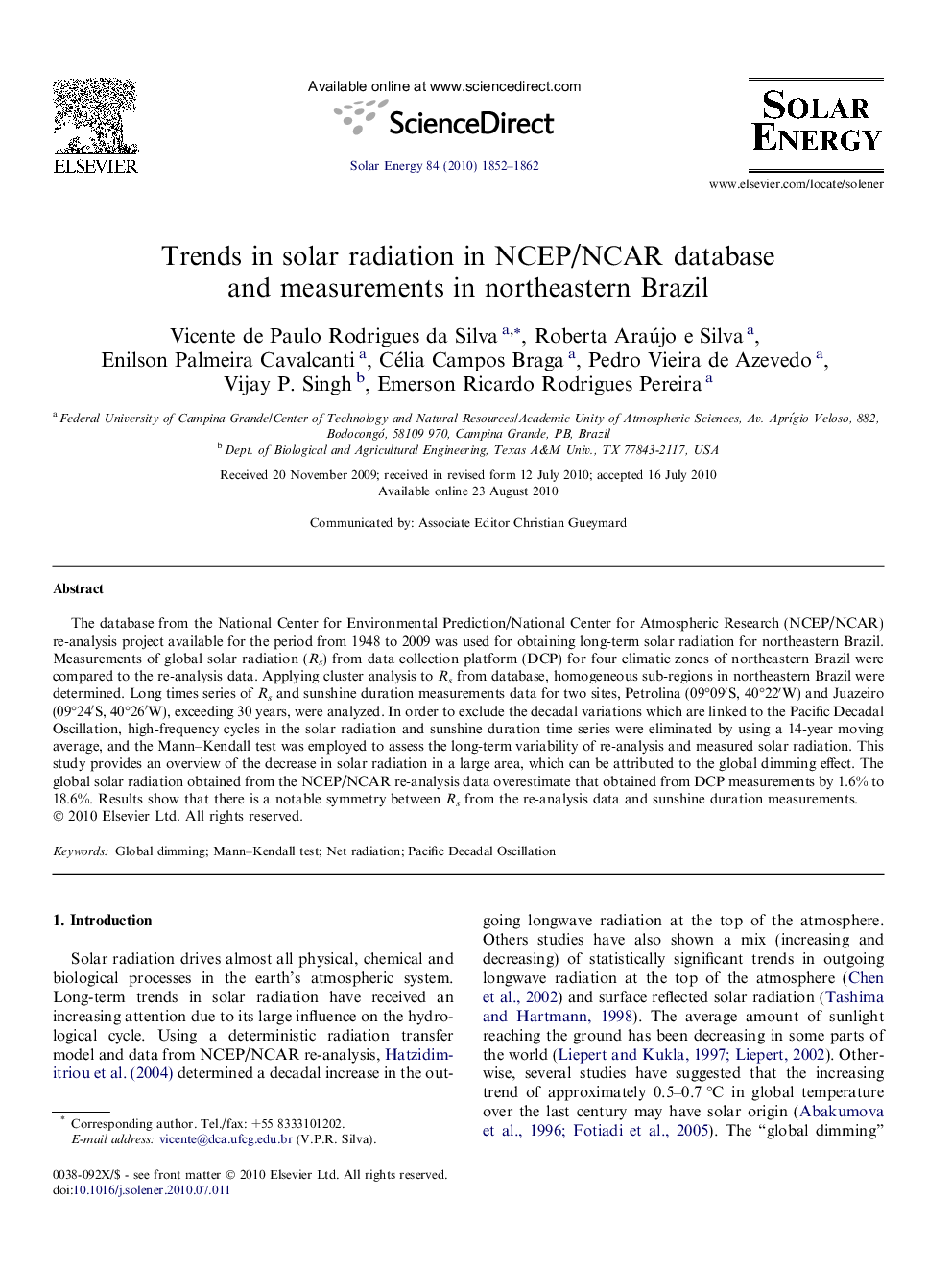| Article ID | Journal | Published Year | Pages | File Type |
|---|---|---|---|---|
| 1551527 | Solar Energy | 2010 | 11 Pages |
The database from the National Center for Environmental Prediction/National Center for Atmospheric Research (NCEP/NCAR) re-analysis project available for the period from 1948 to 2009 was used for obtaining long-term solar radiation for northeastern Brazil. Measurements of global solar radiation (Rs) from data collection platform (DCP) for four climatic zones of northeastern Brazil were compared to the re-analysis data. Applying cluster analysis to Rs from database, homogeneous sub-regions in northeastern Brazil were determined. Long times series of Rs and sunshine duration measurements data for two sites, Petrolina (09°09′S, 40°22′W) and Juazeiro (09°24′S, 40°26′W), exceeding 30 years, were analyzed. In order to exclude the decadal variations which are linked to the Pacific Decadal Oscillation, high-frequency cycles in the solar radiation and sunshine duration time series were eliminated by using a 14-year moving average, and the Mann–Kendall test was employed to assess the long-term variability of re-analysis and measured solar radiation. This study provides an overview of the decrease in solar radiation in a large area, which can be attributed to the global dimming effect. The global solar radiation obtained from the NCEP/NCAR re-analysis data overestimate that obtained from DCP measurements by 1.6% to 18.6%. Results show that there is a notable symmetry between Rs from the re-analysis data and sunshine duration measurements.
